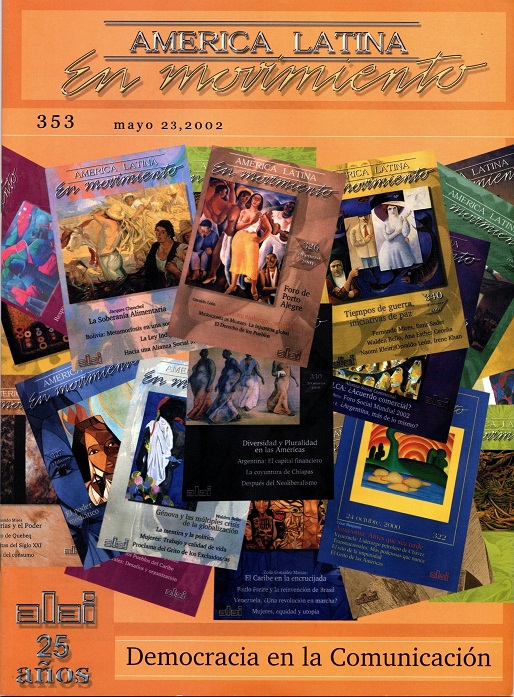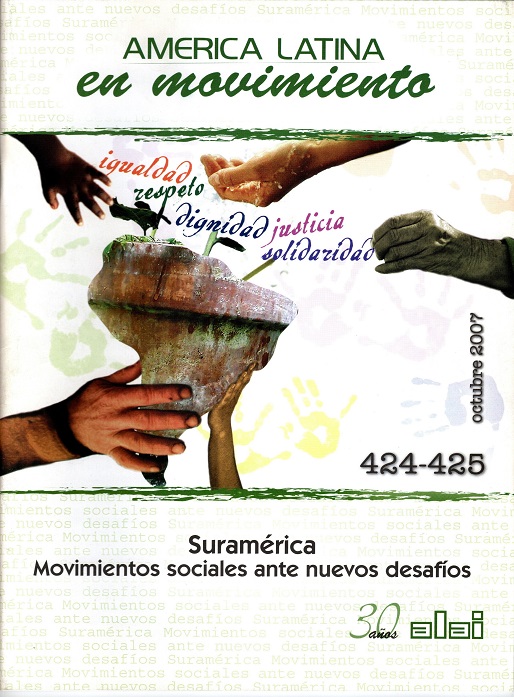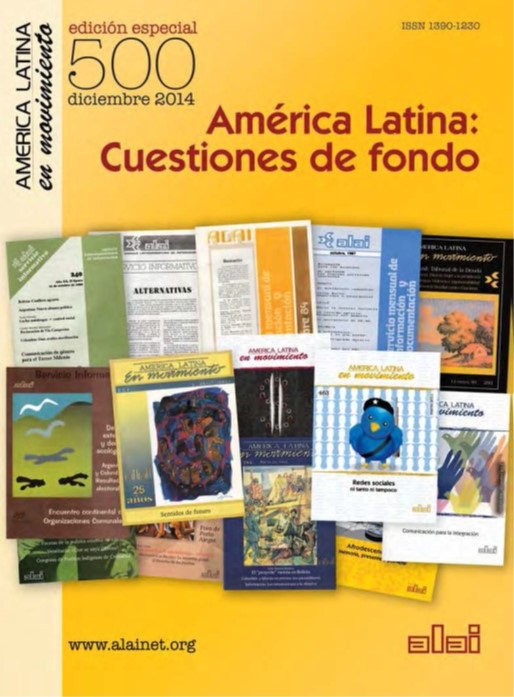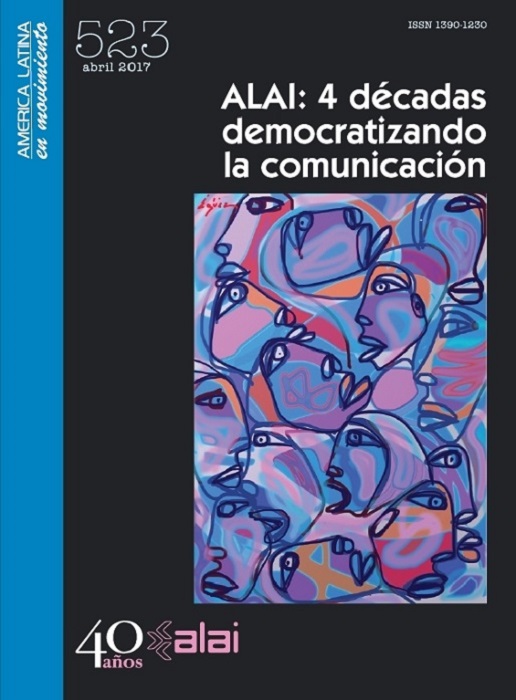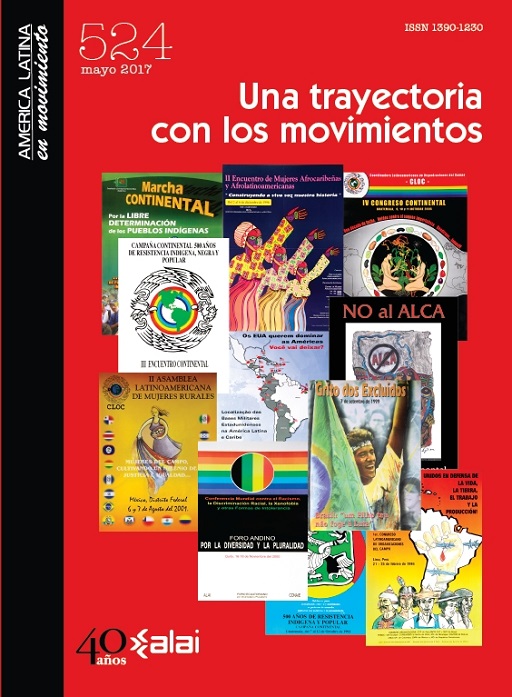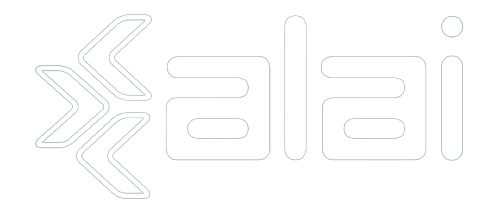The Enron-Cheney-Taliban Connection?
28/02/2002
- Opinión
Enron is a scandal so enormous that it's hard to wrap your mind around
it. Not just a single financial disaster, it's actually a jigsaw of
interlocking scandals, each outrageous in its own right.
There's Enron the Wall St. con game, where company bookkeepers used
slight of hand to turn four years of steady losses into stunning
profits. There's Enron the reverse Robin Hood, which stole from its
own employees even as its executives were hauling millions of dollars
out the backdoor. There's Enron's Ken Lay the Kingmaker, who used the
corporation's fraudulent wealth to broker elections and skew public
policy to his liking. And then there are the Enron coverups, as
documents are shredded and the White House seeks to conceal details
about meetings between Enron and Vice President Cheney.
The coverups are still very much a mystery. What were the documents
that were fed into the shredder -- even after the corporation declared
bankruptcy? What is the White House fighting to keep secret, even
going to the length of redefining executive privilege and inviting the
first Congressional lawsuit ever filed against a president? Were the
consequences of releasing these documents more damaging than the
consequences of destroying them?
Could the Big Secret be that the highest levels of the Bush
Administration knew during the summer of 2001 that the largest
bankruptcy in history was imminent? Or was it that Enron and the White
House were working closely with the Taliban -- including Osama bin
Laden -- up to weeks before the Sept. 11 attack? Was a deal in
Afghanistan part of a desperate last-ditch "end run" to bail out
Enron? Here's a tip for Congressional investigators and federal
prosecutors: Start by looking at the India deal. Closely.
Enron had a $3 billion investment in the Dabhol power plant, near
Bombay on India's west coast. The project began in 1992, and the
liquefied natural gas- powered plant was supposed to supply energy-
hungry India with about one-fifth of its energy needs by 1997. It was
one of Enron's largest development projects ever (and the single
largest direct foreign investment in India's history). The company
owned 65 percent of Dabhol; the other partners were Bechtel, General
Electric and State Electricity Board.
The fly in the ointment, however was that the Indian consumers could
not afford the cost of the electricity that was to be produced. The
World Bank had warned at the beginning that the energy produced by the
plant would be too costly, and Enron proved them right. Power from
the plant was 700 percent higher than electricity from other sources.
Enron had promised India that the Dabhol power would be affordable
once the next phase of the project was completed. But to cut
expenses, Enron had to find cheap gas to fuel it. They started
burning naphtha, with plans that they would retrofit the plant to gas
once it was available.
Originally, Enron was planning to get the liquefied natural gas (LNG)
From Qatar, where Enron had a joint venture with the state-owned Qatar
Gas and Pipeline Company. In fact, the Qatar project was one of the
reasons why Enron selected India to set up Dabhol: it had to ensure
that its Qatar gas did not remain unsold. In April 1999, however, the
project was cancelled because of the global oil and gas glut. With
Qatar gone, Enron was back to square one in trying to locate an
inexpensive LNG supply source.
Enter the Afghanistan connection
Where the "Great Game" in Afghanistan was once about czars and
commissars seeking access to the warm water ports of the Persian Gulf,
today it is about laying oil and gas pipelines via the untapped
petroleum reserves of Central Asia, a region previously dominated by
the former Soviet Union, with strong influence from Iran and Pakistan.
Studies have placed the total worth of oil and gas reserves in the
Central Asian republics at between $3 and $6 trillion.
Who has access to that vast sea of oil? Right now the only existing
export routes from the Caspian Basin lead through Russia. U.S. oil
companies have longed dreamed of their own pipeline routes that will
give them control of the oil and gas resources of the Caspian Sea.
Likewise, the U.S. government also wants to dominate Central Asian oil
in order to reduce dependency on resources from the Persian/Arabian
Gulf, which it cannot control. Thus the U.S. is poised to challenge
Russian hegemony in a new version of the "Great Game."
Construction of oil and natural gas export pipelines through
Afghanistan was under serious consideration during the Clinton years.
In 1996, Unocal -- one of the world's leading energy resource and
project development companies -- won a contract to build a 1,005-mile
oil pipeline in order to exploit the vast Turkmenistan natural gas
fields in Duletabad. The pipeline would extend through Afghanistan
and Pakistan, terminating in Multan, near the India border.
Multan was also the end point for another proposed pipeline, this one
from Iran. This project never left the drawing boards, however; the
pipeline would be much longer (over 1,600 miles) and more expensive.
Still, this route was being seriously considered as of early 2001, and
it increased the odds that gas would be flowing into Multan from
somewhere.
Unocal wasn't the only energy company laying pipe. In 1997, Enron
announced that it was going to spend over $1 billion building and
improving the lines between the Dabhol plant and India's network of
gas pipelines.
Follow the map: Once a proposed 400-mile extension from Multan,
Pakistan to New Delhi, India was built, Caspian Sea gas could flow
into India's network to New Delhi, follow the route to Bombay -- and
bingo! A plentiful source of ultra-cheap LNG that could supply Enron's
plant in India for three decades or more.
Besides the route to Multan, another proposed spur of the pipeline
would have ended on the Pakistan coast, where an estimated one million
barrels of LNG per day could be shipped to Japan and Korea, the
largest consumers of LNG in the world. For Enron, there was an upside
here as well. Entering the South Eastern Asian markets, which offered
vast growth potential, could position Enron well in the global
marketplace and offset some of their losses in other markets.
There was one gotcha: It looked like the trans-Afghan section of the
pipeline might never be built. Afghanistan was controlled by
religious extremists who didn't want to cooperate.
Enter the Taliban
From 1997 to as late as August 2001, the U.S. government continued to
negotiate with the Taliban, trying to find a stabilizing factor that
would allow American oil ventures to proceed with this project without
interference. To this end, in December 1997, Unocal invited the
Taliban contingency to Texas to negotiate protection while the
pipeline was under construction. At the end of their stay, the Afghan
visitors were invited to Washington to meet with the government
officials of the Clinton Administration.
But in August, 1998, terrorists linked to Osama bin Laden bombed two
U.S. embassies in East Africa. After a few cruise missiles were
fired into Afghanistan and the Pentagon boasted that we had disabled
bin Laden's "terrorist network," Unocal said they were abandoning
plans for a route through the country. But was such a potentially
lucrative deal really dead?
Not hardly. Although Unocal had the largest share, the "Central Asian
Gas Pipeline" (CentGas) consortium had six other partners, including
companies in Saudi Arabia's Delta Oil Company -- the next largest
shareholder with 15 percent -- and groups in Japan, Korea, Indonesia,
Pakistan, and Turkmenistan. They vowed to continue the project, and
had strong national interests in seeing the Afghanistan pipeline
built.
The U.S. looked for other options, and the Trade and Development
Agency commissioned a feasibility study for an improbable east- to-
west route that would cross the Caspian Mountains and end at a
Mediterranean seaport in Turkey. The company hired for that study was
Enron. If that pipeline were to be constructed, Turkmenistan signed
an agreement that it would be built by Bechtel and GE Capital Services
-- the same American companies that were Enron's business partners in
the Dabhol power plant.
No matter which direction the Central Asia natural gas would
eventually flow, Enron would profit. Should it go south towards ships
waiting on the Pakistan coast, it would be still only a few hundred
miles at sea to Dabhol. The trip from the Mediterranean would be
farther (and thus more expensive for Enron to buy gas), but it was
also the least likely route to be constructed. Estimated costs were
almost $1 billion more than the route through Afghanistan, and
engineering plans had not even started. No, the only practical route
for the Caspian Sea gas was through Afghanistan and Pakistan to the
border of India. All that was lacking was the political will to make
it happen.
Enter George W. Bush
Bush's long and personal relationship with Enron's former CEO Kenneth
Lay is now well known, as is his generous contribution of over
$600,000 to advance the political career of the man who now holds the
White House. Not so well known is how Bush has helped Enron.
In 1988, Bush allegedly called Argentina's Minister of Public Works to
pressure him into awarding Enron a $300 million contract shortly after
his father won the presidency. Rodolfo Terragno recalled that the
younger George Bush said that giving Enron the project "would be very
favorable for Argentina and its relations with the United States."
Terragno didn't know whether this message was from the White House or
whether Bush was working a business deal on his own.
(Although unlikely, it is possible that Terragno was called by brother
Neil Bush, who would later seek an oil drilling deal in Argentina.
The Bush Sr. campaign denied that George W. made the call. This
was, however, the time period when Lay began to cultivate his
friendship with George W. And there is no known association between
Neil Bush and Lay. That two Bush brothers are suspects, however,
speaks to the levels of power that this family wields.)
By the time George W. became president, the India project was in
serious trouble. Enron's reputation as a bully in India was legion.
The Human Rights Watch released a report that indicated human rights
violations had occurred as a result of opposition to the Dabhol Power
project. Beginning in late 1996 and continuing throughout 1997,
leading Indian environmental activists and employee organizations
organized to oppose the project and, as a direct result of their
opposition were not paid and subjected to repeated short-term
detention. One ghastly report actually states that police stormed the
homes of several women in western India who had led a massive protest
against Enron's new natural-gas plant near their fishing village.
According to Amnesty International, the women were dragged from their
homes and beaten by officers paid by Enron.
The crisis came just a few months after the Bush inauguration
Contractors walked off the job, saying they hadn't been paid for over
a month. The [India state of] Maharashtra Electricity Board stopped
paying for Dabhol's power in May 2001, saying it was too expensive.
Enron counter-charged that the Board owed them $64 million. The plant
was closed, although it is said to be 97 percent complete. All that
was missing was a source for cheap, cheap, natural gas.
Enter Dick Cheney
Scarcely a month after Bush moves into the White House, Vice President
Cheney has his first secret meeting with Ken Lay and other Enron
executives on February 22, 2001. Other meetings follow on March 7 and
April 17. It is the details of these meetings that the Bush
Administration is seeking to keep private.
It's clear the Cheney had his own conflicts of interest with Enron. A
chief benefactor in the trans-Caspian pipeline deal would have been
Halliburton, the huge oil pipeline construction firm which was
previously headed by Cheney. After Cheney's selection as Bush's Vice
Presidential candidate, Halliburton also contributed a huge amount of
cash into the Bush-Cheney campaign coffers.
So the obvious question: Did Enron lobby Cheney for help in India? It
has already been documented that the Vice President's energy task
force changed a draft energy proposal to include a provision to boost
oil and natural gas production in India in February of last year. The
amendment was so narrow that it apparently was targeted only to help
Enron's Dabhol plant in India. Later, Cheney stepped in to try to
help Enron collect its $64 million debt during a June 27 meeting with
India's opposition leader Sonia Gandhi. But behind the scenes, much
more was cooking.
A series of e-mail memos obtained by the Washington Post and NY Daily
News in January revealed that the National Security Council led a
"Dabhol Working Group" composed of officials from various Cabinet
departments during the summer of 2001. The memos suggest that the
Bush Administration was running exactly the sort of "war room" that
was a favorite subject of ridicule by Republicans during the Clinton
years.
The Working Group prepared "talking points" for both Cheney and Bush
and recommended that the need to "broaden the advocacy" of settling
the Enron debt. Every development was closely monitored: "Good news"
a NSC staff member wrote in a e-mail memo: "The Veep mentioned Enron
in his meeting with Sonia Gandhi." The Post commented that the NSC
went so far that it "acted as a sort of concierge service for Enron
Chairman Kenneth L. Lay and India's national security adviser,
Brajesh Mishra" in trying to arrange a dinner meeting between the
Indian official and Lay.
While lobbying India, it appears that the Bush Administration was also
raising the heat on the Taliban to allow the pipeline.
The book "Bin Laden: the Forbidden Truth" by Jean-Charles Brisard and
Guillaume Dasique claims that the U.S. tried to negotiate the
pipeline deal with the Taliban as late as August, 2001. According to
the authors, the Bush Administration attempted to get the Taliban on
board and believed they could depend upon the regime to stabilize the
country while the pipeline construction was underway. Bush had
already indirectly given the Taliban $43 million for their supposed
efforts to stamp out opium-poppy cultivation. Was this an award -- or
a bribe? The circumstances make this a valid question.
Enron was unraveling at the seams, yet in early August, Kenneth Lay
seemed optimistic, even exuberant. Was he whistling past the
graveyard, or did he have secret information? The last meeting between
U.S. and Taliban representatives took place five weeks before the
attacks on New York and Washington; on that occasion, Christina Rocca,
in charge of Central Asian affairs for the U.S. government, met the
Taliban ambassador to Pakistan in Islamabad on August 2, 2001. Rocca
said the Taliban representative, Mr. Zaeef, was aware of the strong
U.S. commitment to help the Afghan people and the fact that the
United States had provided $132 million in relief assistance so far
that year.
Lay's last documented e-mail was sent on August 27th, about the same
time the Taliban allowed the International Red Cross to visit jailed
foreign aid workers in Afghanistan. In it, Lay waxes optimistic about
the strength and stability of his company, and exhorts his employees
to buy into the company's stock program. Was Kenneth Lay anticipating
a new pipeline deal, and an Enron contract, courtesy of George W.
Bush? If a deal was at hand, he had every reason to be optimistic
about the future.
Even though the trans-Caspian pipeline and the extension into India
would be years from completion, Enron's conceit of working above the
law was ultimately the guiding beacon in all of its transactions.
They had played the game of subterfuge for so long, they were near
experts at covering their tracks. Even if Lay knew at this point that
bankruptcy was imminent, Enron had always survived major hurdles in
the past, right? The possibility of a total meltdown was most likely
not even a consideration -- there could always be an 11th hour federal
bailout.
However, from all records, relationships became strained. The Taliban
had demanded that the U.S. should also reconstruct Afghanistan's
infrastructure and that the pipeline be open for local consumption.
Instead, the U.S. wanted a closed pipeline pumping gas for export
only and was not interested in helping to rebuild the country.
In turn, the U.S. threatened the Taliban during the negotiations.
The directive of "we'll either carpet you in gold or carpet you in
bombs" was bantered about in the press to underscore the emerging
willfulness of the U.S.
But sometime in late August, apparently the whole deal went
sour.
Enron had one last card to play, and that was selling the Dabhol plant
For quick cash -- if it could. If Enron could get its asking price of
$2.3 billion, then maybe the company could pull out of its bankruptcy
nose dive.
In late August, Lay appeared to threaten India in an article in the
London Financial Times. We expect full price for the plant, he
warned; if they received anything less, there could be backlash:
"There are laws that could prevent the U.S. government from providing
any aid or assistance to India going forward if, in fact, they
expropriate property of U.S. companies," he said. When Indian
officials called these statements "strong arm tactics," an Enron
statement claimed Lay "was merely referring to U.S. laws." Again Lay
appeared to threaten India in a Sept. 14 letter to the Prime
Minister, insisting that the $2.3 billion price was reasonable because
they had a "legal claim" of up to $5 billion.
But the house of cards collapsed dramatically on November 8, when
Enron disclosed that it had overstated earnings dating back to 1997 by
almost $600 million. That same day, an e-mail ("Importance: High"),
whose sender and recipient are blacked out, warned, "President Bush
cannot talk about Dabhol as was already mentioned." The memo also said
that Bush economic adviser Lawrence Lindsey could not discuss Enron
either. Lindsey had been an Enron consultant.
The end came in December 2001, as Enron fired the 300 remaining
workers at the plant. Enron also filed a $200 million claim with the
U.S. government's Overseas Private Investment Corporation, a U.S.
taxpayer- funded insurance fund for American companies abroad, in an
attempt to recoup losses from the Dabhol Power Corporation.
On the last day of the year, President Bush appointed Zalmay Khalilzad
as his special envoy to Afghanistan. Khalilzad is a former Unocal
consultant, whose positions on Afghanistan changed in sync with
Unocal's own. When it looked like the pipeline would be built in
1996, Khalilzad advocated that the U.S. should work with moderate
elements in the Taliban. By 2000 Unocal was out of the project, and
Khalilzad was writing that the U.S. must undermine the Taliban.
It's clear that once again the Great Game is afoot, now that the
Taliban are gone. Today, Khalilzad is the Special Assistant to the
President and National Security Council member responsible for setting
up the post-Taliban "Pro-Unocal" regime in Afghanistan. International
oil men euphemistically call the project the new "Silk Road." On Feb.
8, Afghanistan's interim leader Hamid Karzai and Pakistan's president
agreed to revive plans for a trans-Afghanistan route for Iranian gas.
The next day, Turkmenistan chimed in that they hoped their trans-
Afghanistan route would be soon built. It's all but certain that gas
from somewhere will reach Multan -- and the Dabhol plant beyond.
For investors, Dabhol should be a bitter lesson. Enron was a company
known for its hubris that tried to accomplish too much, too quickly,
playing too fast and loose with financial realities. In the end,
Enron found that its far-reaching global clout could no longer
circumvent the rules of basic economics -- nor could it count on the
players they helped bring into power.
Until there is a full investigation, questions will remain about how
far the Bush team went to try to save their buddies at Enron. Vice
President Dick Cheney's refusal to release details about his private
April meeting with Lay is suspicious. It is already known that Cheney
accepted seven out of eight national energy policy recommendations
made by Lay; so what are they so damned determined to keep secret?
What could be more incriminating than that?
On Feb. 22, the GAO sued Cheney, who has stated that the White House
will go to court to fight the release of the documents. (However,
John W. Dean, former Nixon staffer and Watergate witness, is quick to
point out that executive privilege is unique to the president, not the
vice president.) With recent discovery that a highest-level "Dabhol
Working Group" was set up in the Bush Administration, it appears that
there is much more to be uncovered.
Is the White House covering up that it was molding foreign policy as
well as energy policy to suit Enron? Did the Bush Administration know
that Enron's collapse was coming as early as August? If any of these
are true, the largest bankruptcy in American history may well connect
with the greatest political scandal in American history.
Ron Callari is a freelancer writer. This article originally
appeared in the Albion Monitor, February 28, 2002
https://www.alainet.org/de/node/105831
Del mismo autor
- The Enron-Cheney-Taliban Connection? 28/02/2002
Guerra y Paz
- Prabir Purkayastha 08/04/2022
- Prabir Purkayastha 08/04/2022
- Adolfo Pérez Esquivel 06/04/2022
- Adolfo Pérez Esquivel 05/04/2022
- Vijay Prashad 04/04/2022
